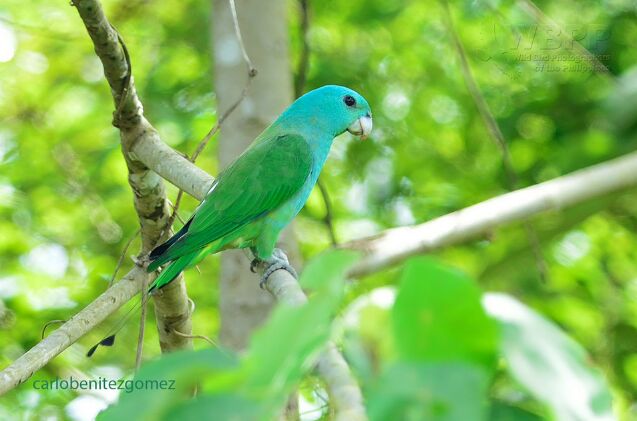Blue Headed Racket Tail Parrot


About Blue Headed Racket Tail Parrot
An elusive sight in modern aviculture, the Blue Headed Racket Tail parrot is a wonderful bird with a lot of unique features. Even though they are endangered and rare in the wild, they are a sought-after breed in the world of pet birds, as they display a variety of interesting traits. Peaceful and friendly, but inquisitive as well, these parrots have all that is needed for a loving and charming pet. One of the iconic parrots of the Philippines, they are a common pet in this Pacific country, but a rare treat for pet owners in the rest of the world. Let’s try to learn more about the unique Blue Headed Racket Tail!
Charming and pretty, the Blue Headed Racket Tail parrot makes a great pet for families or singles.
Native Region/Natural Habitat
The natural habitat for these parrots is found in Southeast Asia, mostly centered around the Philippines. This region includes islands such as Palawan, Balabac, Dumaran, and others. They inhabit the regional lowland forests, mangroves, and sparse growths. Sadly, these parrots are a vulnerable breed, suffering greatly due to forest clearing and illegal capture. It is estimated that only between 7000 and 10000 birds remain in the wild. Several programs have been started in hopes of preserving the breed.
The family of racquet tail parrots is relatively small, and most of the birds share some crucial similarities. However, Blue Headed Racket Tail is unique in its own way and are easily recognized by their appearance. The adults reach an average length of 11 inches (28 centimeters) and have a balanced, slender physique. Their neck is slightly elongated. One of the most interesting aspects and the detail that gives them their name is the so-called “racket tail”. A pair of long, bare feather shafts protrudes out from their tail and is topped off with two small circular “spatulas”. This is a feature unique only for this species, and can’t be seen anywhere else in the parrot world.
As is the case with many exotic breeds, the Blue Headed Racket Tail tends to be vocal and loud. This makes them unsuitable as an apartment pet. Even though they are not talkative as some pet parrots, their natural calls can be loud and raucous. This is often a series of short squawks and sometimes a melodious short song. Some birds can learn to mimic just a few words in a very cute way, but this often requires training and patience. Blue Headed Racket Tail is very receptive to music, to which they will dance and sing along with their melodic squawks.
The Blue Headed Racket Tail is an elegant and graceful bird. Even if they don’t show a lot of flashy colors, their peculiar details and color combinations make them extremely charming and beautiful. They are almost entirely green, with visibly lighter tones on the lower side of the body. The wings and back are darker, and their unique tails show a yellow lower part, tipped off with bright, sky blue. As the name suggests, the top half of their head has prominent light blue tones. The tips of the flight feathers are dark blue. This lovely look, combined with their unique “racket” tail extensions, makes for an exotic parrot that will leave no one indifferent.
The “racket tail” is an unusual and beautiful feature, exclusive to these pacific parrots and just a few other birds.
Their wild diet is sparsely documented, but the experts all agree on two main foods – fruits and nuts. As a pet, the Blue Headed Racket Tail will thrive on a fruit-based diet. Fresh bananas, oranges, apples, and pears are all a good choice. Some pellet-based mixes for exotic parrots can also work well as a supplement to their diet. Blue Headed Racket Tail will also enjoy bathing, so don’t forget to offer bathing dishes regularly.
Due to their rarity as a pet outside of Philippines and nearby Asian countries, the Blue Headed Racket Tail can sometimes require a bit more care than common pet parrots. If neglected, fed improperly or housed in a bad way, your pet can suffer. To offer the best possible home for the Blue Headed Racket Tail, ensure they have a spacious cage with plenty of toys and perches. Additionally, provide supervised free movement around the house, balanced diet, and plenty of interaction and playing. These are crucial for the good health of your Blue Headed Racket Tail.
Keeping a Blue Headed Racket Tail in a small cage is the quickest way to endanger their health. Pick out an aviary or a spacious cage.
Blue Headed Racket Tail is gentle, friendly and fun. While it is hard to come by, this bird has all the desirable traits in aviculture. With their docile personalities and smart behavior, they can make a great companion and a friend to a single owner. At first, you might think that your Blue Headed Racket Tail is quiet and shy. But as soon as they get a bit of attention and affection to you, they’ll show a whole different side to them. These rare birds tend to bond deeply with their owners.
Photo credit: rackk67/Internet Bird Collection; Rackk67/Wikimedia Commons; Ramon J Quisumbing/Oriental Bird Images

A proud mama to seven dogs and ten cats, Angela spends her days writing for her fellow pet parents and pampering her furballs, all of whom are rescues. When she's not gushing over her adorable cats or playing with her dogs, she can be found curled up with a good fantasy book.
More by Angela Vuckovic

























